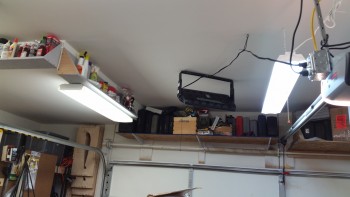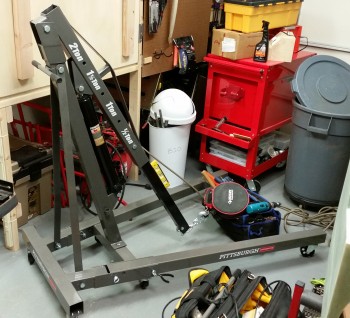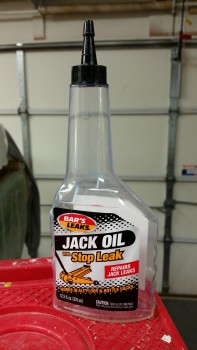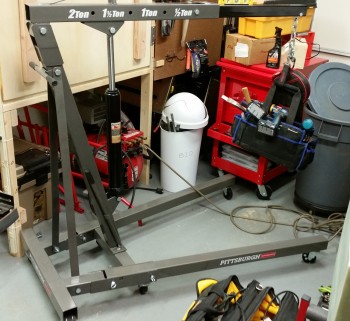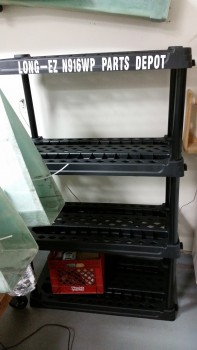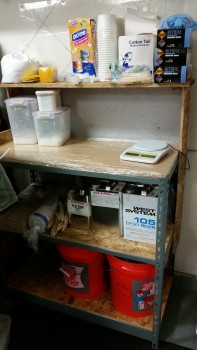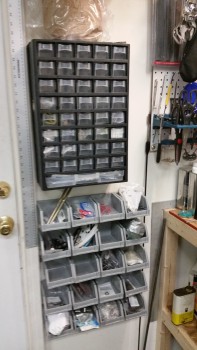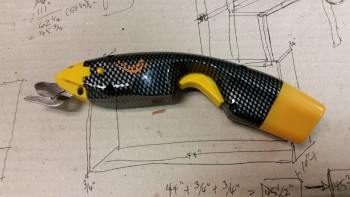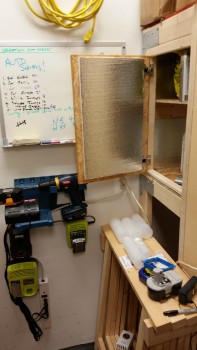With cold winter weather continuing and temps consistently dipping down into the 20’s (F) I clearly needed to heat the garage before I could start building again. I did some research and ended up buying two heaters from Northern Tools.
The first heater is a 120 volt ceiling mounted heater that I positioned towards the large door side of the garage. I quickly realized that with such a hot heat source blazing away at the front corner of the garage, that I had to have some type of cutoff switch to keep the garage door from being able to be opened . . . lest I end up with a scorched garage door as it would sit–when opened–just a foot or so below a very hot heater.
I installed a box to the side of the garage door opener with plugs for both the heater and the garage door, and an either/or switch that allows only the heater or the garage door to be powered at any one time. This solved the potential issue of frying my garage door paint and/or a possible fire.
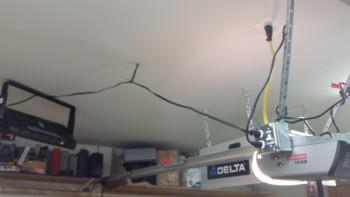
While I had the ladder positioned to install the heater and switch, I went ahead and installed a hanging light bar to add some much needed light to the front of the garage.
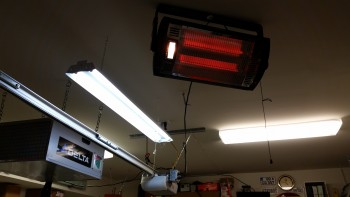
After the front of the garage heater was installed, I turned my sights on the second mo-jamma heater I received from Northern Tools: Big Red! The issue with Big Red was power since it required a 240 volt / 30 amp circuit, which I didn’t have in the garage. Behind the back wall of the garage sits an HVAC/utility room and a half bathroom. Behind that is a billiards room, with the electrical junction box on the back wall in the corner.
Thus, to use “Big Red” I needed to run a heavy 10 ga cable from the electrical box to the back wall of the garage. I should add that this new cable run would allow me to use the 240V/30Amp plug for my TIG & MIG welders in addition to “Big Red.”
I decided the best way to run the cable from the electrical box to the garage was behind the crown molding that I had put up in the pool room. Since I will pull this circuit when I eventually sell this house, I’m not concerned about someone discovering this cable run by accident. So, I started by pulling down a piece of crown molding to get access to both run the wire cable forward to the garage and down behind the wall into the electrical box.
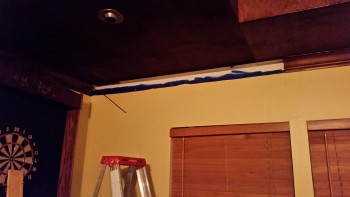
It was quite a pain to run the line behind the crown molding, but through trial, error, blood, sweat, tears and some cussing, I eventually got it. While I was running the 10 ga cable I went ahead and ran a 14 ga 120V/15amp line as well to have a plug on top of my cabinets.
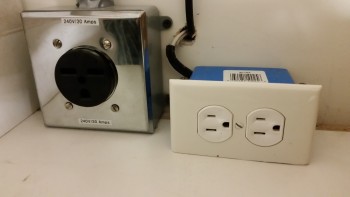
Here’s a pic of Big Red installed!
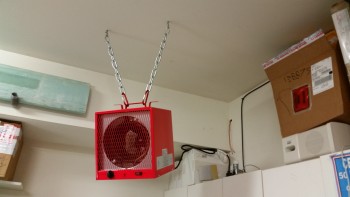
After I got Big Red installed, I grabbed a light bar from my old shop at the other house to add the final light coverage I could really use at the front of the garage. Here’s a pic of the installed light bar (on the left) below.
